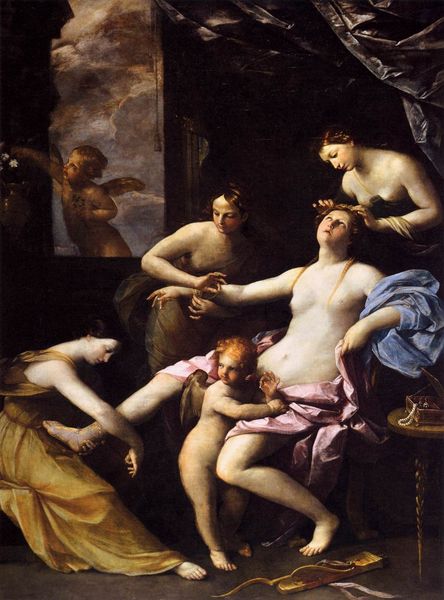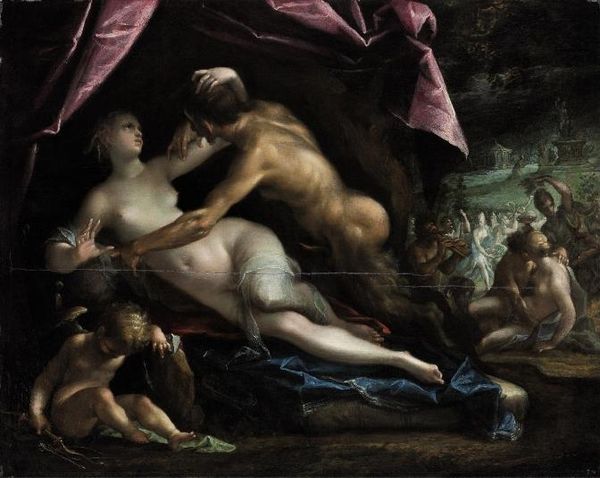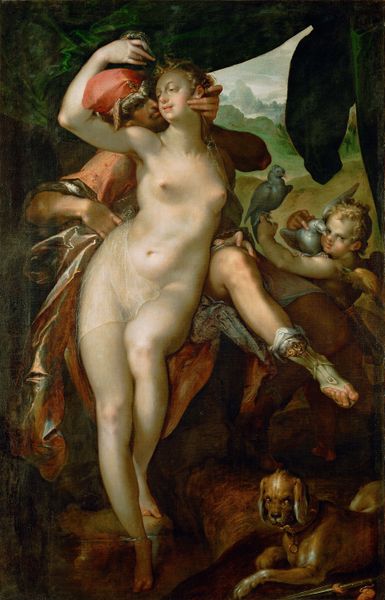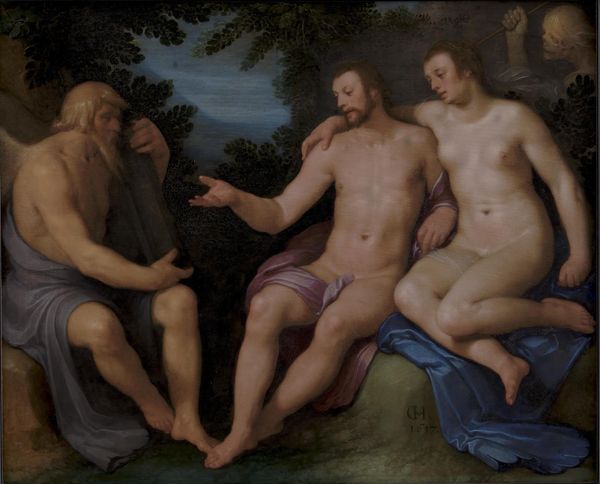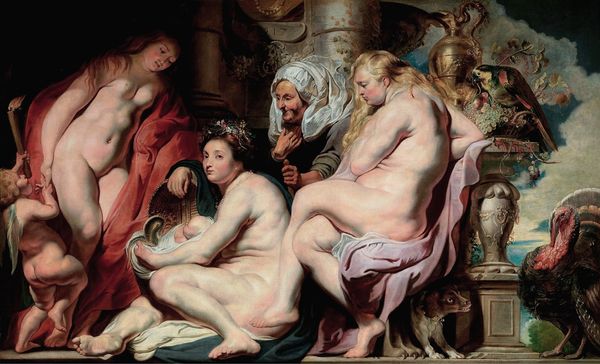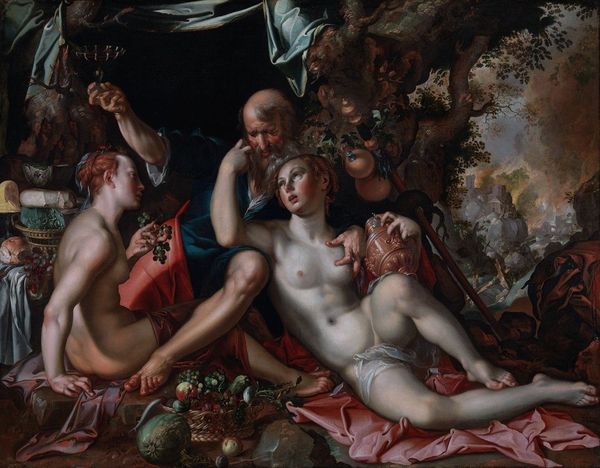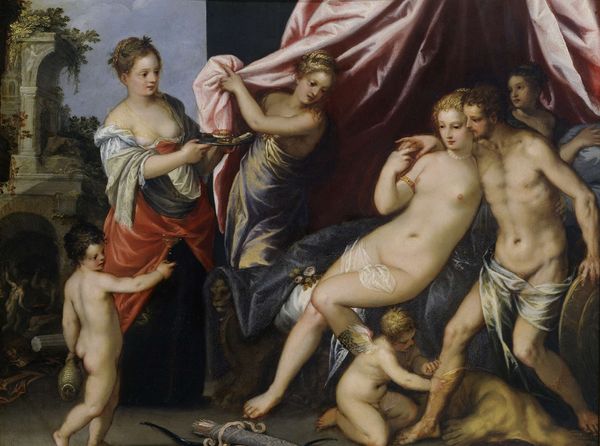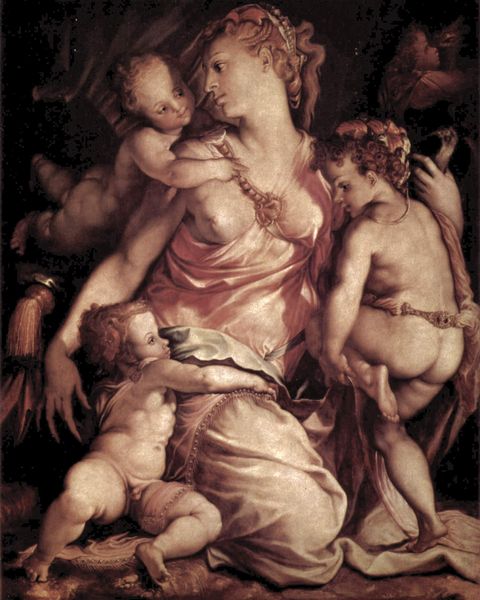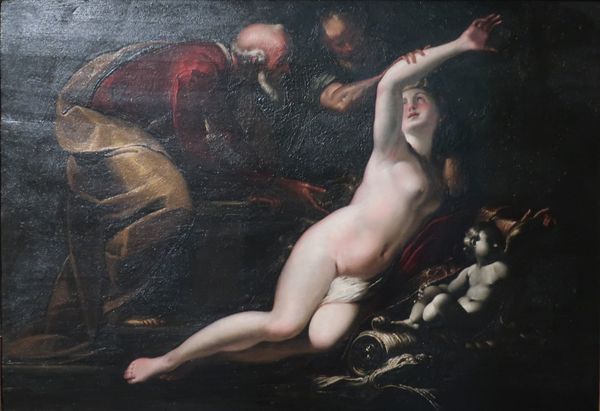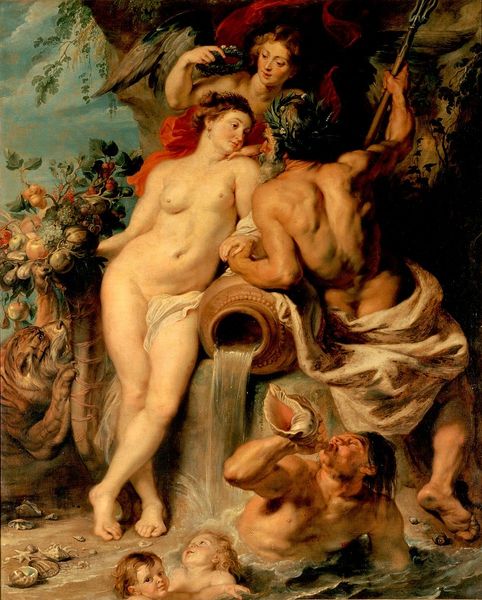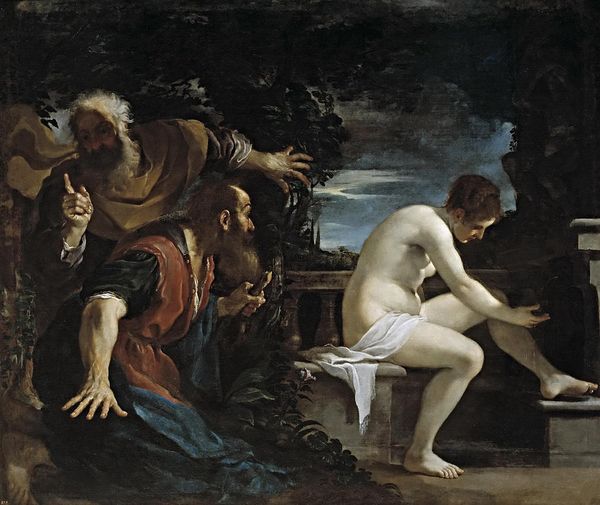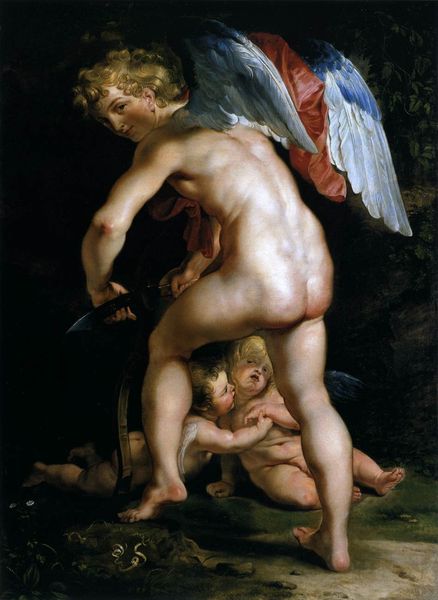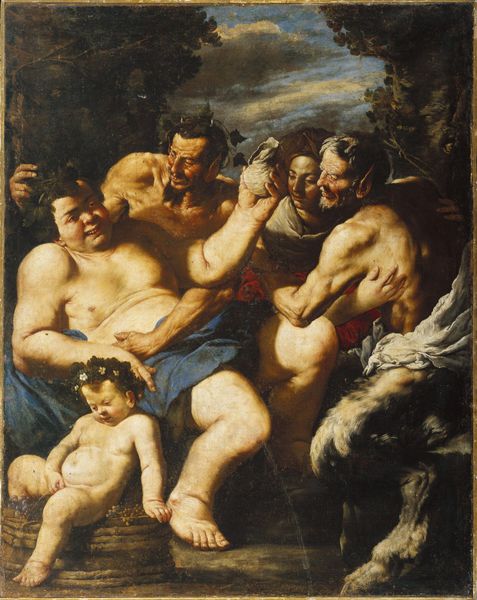
painting, oil-paint
#
allegory
#
baroque
#
painting
#
oil-paint
#
figuration
#
nude
Copyright: Public domain
Curator: Procaccini's “Venus and Cupid,” crafted around 1625, presents us with a rather intriguing tableau rendered in oil paint. The scene feels quite intimate, almost voyeuristic in a way. What's your immediate reaction to it? Editor: Well, visually, it’s striking, almost theatrical, with that stark contrast between light and shadow, reminiscent of Caravaggio. The figures emerge from the darkness. There's also this distinct sensuality about Venus, reclining with a somewhat vacant gaze, while these playful cupids surround her, heightening the drama of it all. Curator: Exactly, there's this whole power dynamic at play that echoes broader societal structures. How does the Baroque style impact our understanding, especially thinking through a feminist lens? Editor: I see how the theatricality underscores power. Baroque's dynamism is used to elevate Venus, but perhaps ironically. She's idealized yet passive, almost an object caught in their game, perpetuating stereotypical representations of femininity. She is a figure of display rather than agency. Curator: Agreed. Now consider the role of these cupids. What are they actually *doing*? Are they simply instruments of Eros or perhaps are they harbingers of the sometimes violent consequences that can arise out of our relations to one another? It appears some prepare the bow, whilst another fondles her. Is there something coercive implicit in these gestures? Editor: It’s worth investigating. Considering that, how do social institutions like the church at that time contextualize interpretations of this image and those behaviors? The patronage system surely impacted artistic agency, so in that respect, how transgressive could an artist be, and how would it be viewed by contemporary audiences? Curator: Absolutely, it brings up crucial questions about how art shapes public morals and, conversely, how public sentiment shapes art production. A painting like this forces us to confront uncomfortable issues of the female body as both desired object and source of anxieties surrounding the role of desire itself. Procaccini really holds us here, between pleasure and unease. Editor: A tension that continues to resonate even now as we reassess these visual languages! Thanks, that has given me a lot to reflect on. Curator: Indeed! The continuing capacity of art to invite inquiry is what makes these discussions perpetually worthwhile.
Comments
No comments
Be the first to comment and join the conversation on the ultimate creative platform.
